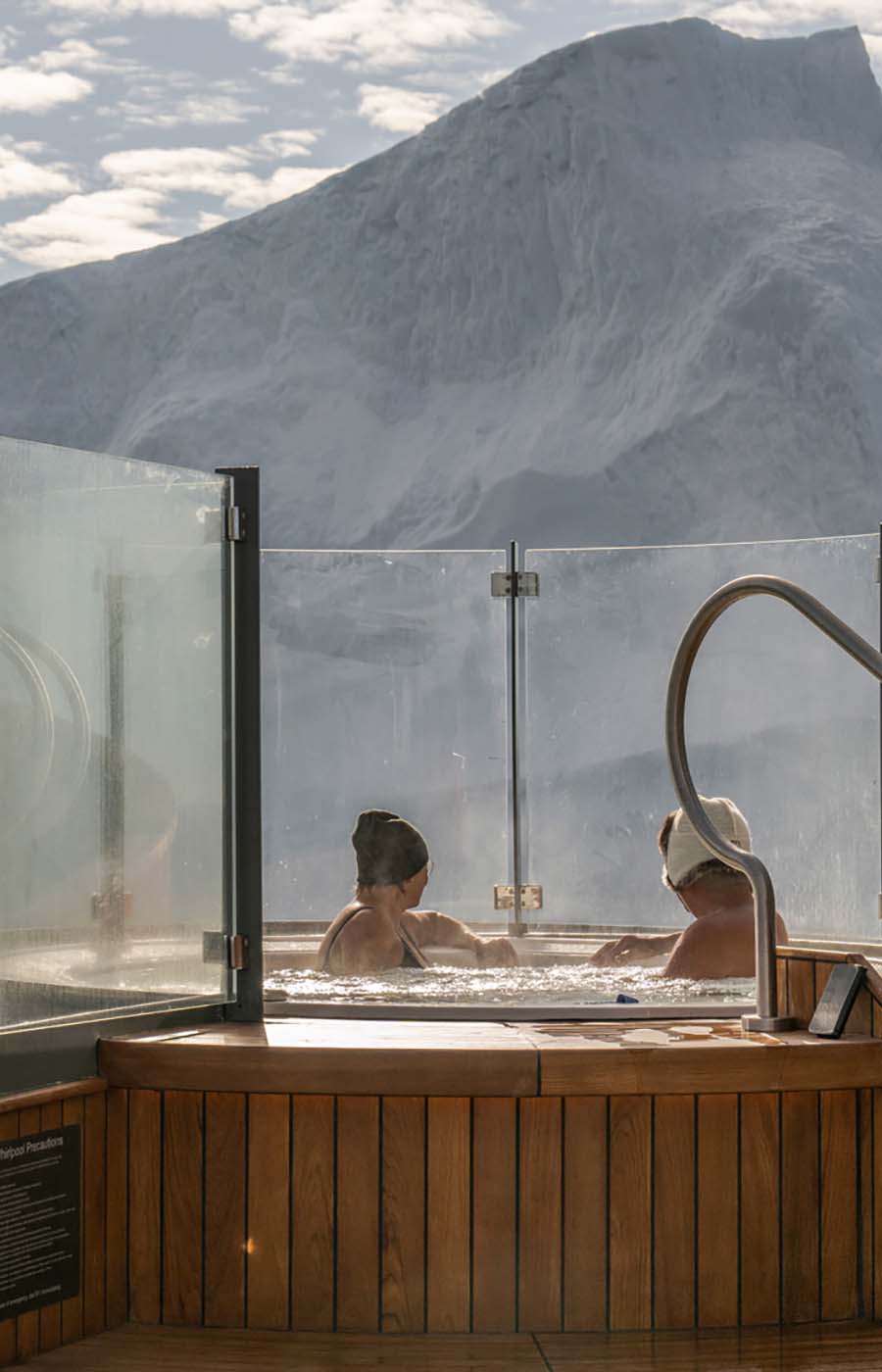From orcas to stealthy submarines, there are hidden worlds filled with amazing secrets just below Alaska’s waterline.
Imagine the scene, here at the top of the world. Your ship plows the waters off the Alaskan Coast. From the vantage point of her deck, your eye turns to the wonders of the land: the stark peaks of the Chugach Mountains bordering the Gulf; brown bears roaming the islands of Prince William Sound; tidewater glaciers towering bluewhite, reflected in the rippling surface of the Kenai Fjords.
And under the surface? Mystery. Ocean temperatures here don’t rise much above 50° F even in midsummer. In winter, the water temperature hovers around freezing; it’s an environment seemingly as inimical to life as the surface of the moon.
But life, as they say, finds a way. Far below the keel and the whirling propellers, fathoms down in the frigid North Pacific, where it’s sunless and silent, there is constant activity of marine life and human endeavor — most of it unseen. Look a little deeper.
It takes a fearless creature to thrive in these icy waters, and there are few creatures as fierce as the orca. These massive predators, also known as killer whales, can reach lengths of up to 26 feet. They prefer coastal waters to the profound depths of the open ocean, as they must surface periodically to breathe.
The orca’s powerful jaws and teeth mark them as kin to dolphins. Their appetites are as undiscriminating and vast. With no predators but man, orcas will feast on schooling fish, seals, sea lions, rays and the smaller species of baleen whales. They have even been documented preying on the great white shark.
Though their effective range stretches nearly from pole to pole, orcas are particularly associated with the oceans of the North, where they’ve been a subject of fascination — even worship — among indigenous peoples. The people of Vancouver Island regarded them as the reincarnated souls of great chiefs. The Haida, native to the Alaskan panhandle and Haida Gwaii (formerly Queen Charlotte Islands), held that orcas were shape shifters. Their stories tell of splendid undersea towns ruled by benevolent orcas in human form; the souls of departed sailors were said to dwell among them.
Humanity’s relationship with the orca has not always been so benign. Orcas were not generally hunted for oil during the age of whaling, but were often harpooned or shot nonetheless. Whalers considered them a nuisance, as they gathered around to scavenge from floating carcasses. In recent years, pods or “gangs” of up to 40 orcas have been reported stalking commercial fishing vessels in the Bering Sea — stripping catches of cod and halibut from their lines, leaving behind only the heads and the hooks. The whales may harass a boat for hours, even chasing it at high speed when the captain tries to make a getaway.
Overfishing of food stocks has brought orcas to this — and these intelligent, sociable animals are also at great risk from the build-up of toxins like PCBs in their fat stores, bringing on slow poisoning as the blubber is metabolized. Organizations like the Orca Conservancy (orcaconservancy.org) promote conservation of Pacific Northwest orcas through education, sustainable fishing and habitat protection.
Sustainable fishing is also an issue for the Alaskan king crab. This Bering Sea native may be a familiar guest at your supper table. Its massive legs — which, when fully extended, give the creature an overall width of about 6 feet — are a prized delicacy, their meat juicy and sweet. Their numbers have steadily dropped since the crab-fishing heyday of the late 1970s, but king crabs still persist in international waters and in Russian territory around the Kamchatka peninsula. The fishing grounds for the red king crab — the most commercially prized of the Alaskan species — extend from Norton Sound, at the mouth of the Yukon River, to the islands of the Kodiak Archipelago south of Anchorage.
As babies, king crabs float with plankton, feeding on diatoms and other microscopic creatures. Adult king crabs feed in deep waters, along the muddy bottom some 650 feet down. Fishing vessels sink heavy steel traps (called “pots”) to the sea floor, marking their location with buoys on the surface, then return a day or two later to haul the pots to the surface with hydraulic winches. The crabs are brought in alive, and processed in port. Though king crabs are hardy enough to withstand the crushing pressure of the ocean floor, the catch must be transported with great care; crabs sometimes turn cannibal in captivity, and any that die in the holding tanks can release toxins that may spoil the entire catch.
Strange are the ways of nature, but stranger things yet lurk in the Pacific’s hidden depths. A few years back, a local sensation arose when residents of Dutch Harbor — a borough of Unalaska, the major population center of the Aleutian Islands — witnessed the unheralded surfacing of a U.S. Navy submarine. Glossy black with lines like a knife in the water, the USS Seawolf breached, incongruously enough, within sight of the town’s landfill. The nuclear-powered vessel had been on a long-term mission in the far North, under the polar ice, before its unexpected diversion to the Aleutians.
As it transpired, the Seawolf’s mission in Dutch Harbor was mundane: two of the crew had been placed on compassionate leave, and rather than recall the sub to its home port in Washington state, the Navy elected to fly replacements into Unalaska. But not all the Navy’s activities in these cold seas are quite so workaday. In the deeps of the Behm Canal, near Ketchikan, whisper-quiet submarines deploy hightech equipment to study the nature of silence itself.
Related Seabourn itineraries and amenities below
The mission of the Southeast Alaska Acoustic Measurement Facility (SEAFAC) is to study and analyze the “acoustic signatures” of submarine engines. The Navy chose to site SEAFAC in the Behm Canal because its waters are some of the quietest in the Pacific.
Sound waves can propagate for many miles in water, and a welter of sonic activity — much of it at frequencies inaudible to the human ear — occurs even in the deep ocean: songs of whales, pings of sonar and fish finders, rumbling of motors. The canal’s location and construction cut it off from most ambient undersea noise.
Scientists at SEAFAC measure the acoustic output both of submarines in motion, with engines running, and stationary subs with only life-support functions operating. For these “static” tests, the submarines do not even descend under their own power, but are lowered into the sea by enormous suspension barges. The vehicles hang motionless, cradled on cables strung between two barges, while sophisticated testing arrays collect data on the auditory signature of individual ship systems. Each pump, each cooling fan, each valve sings its own tune, and the researchers of SEAFAC mean to catalog each one.
The goals of SEAFAC’s research, of course, are not only to develop better methods to identify vessels from afar, but to find methods for silencing American vessels to avoid precisely this type of identification; to design super-stealthy submarines that can pass undetected even by sophisticated listening devices, that might cruise deep beneath the shipping lanes on top-secret missions with no one in the sunlit world any the wiser. Think on that, as you gaze out at the placid surface, and wonder what goes on underneath.

